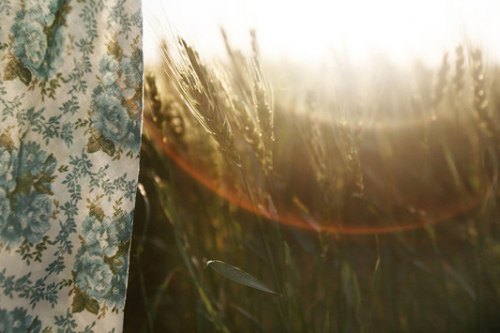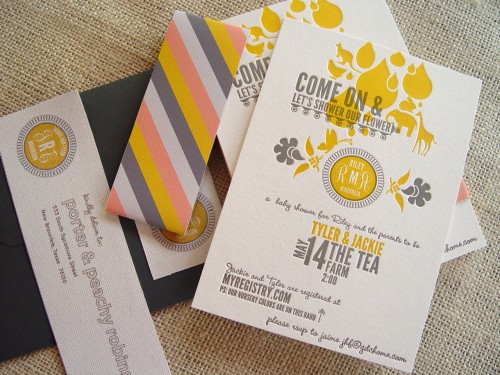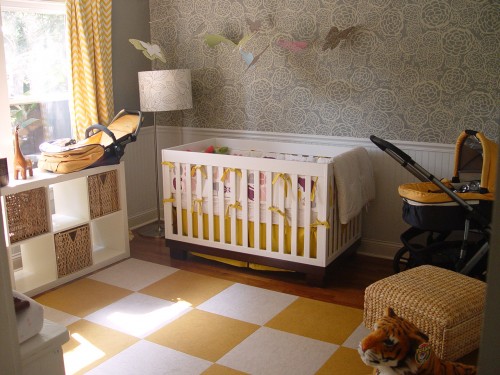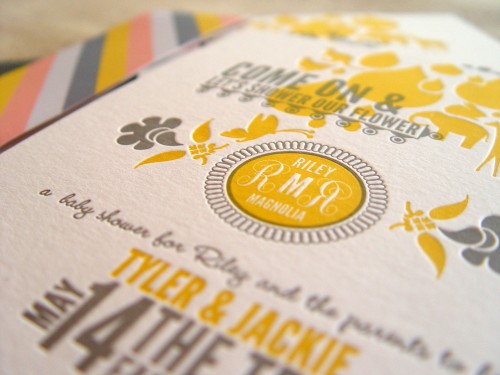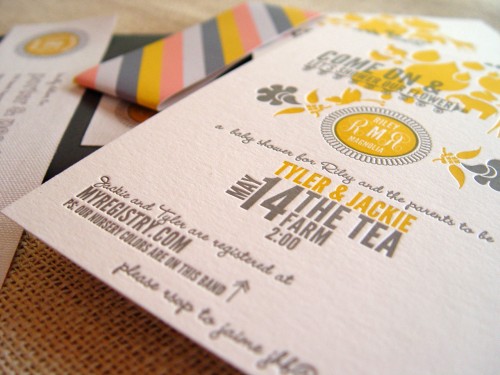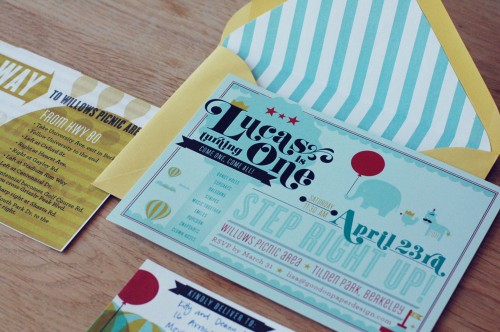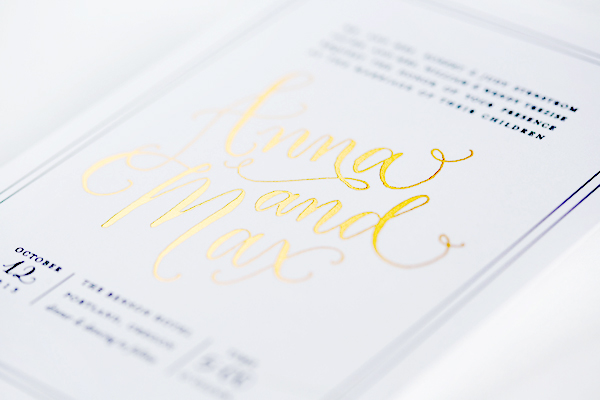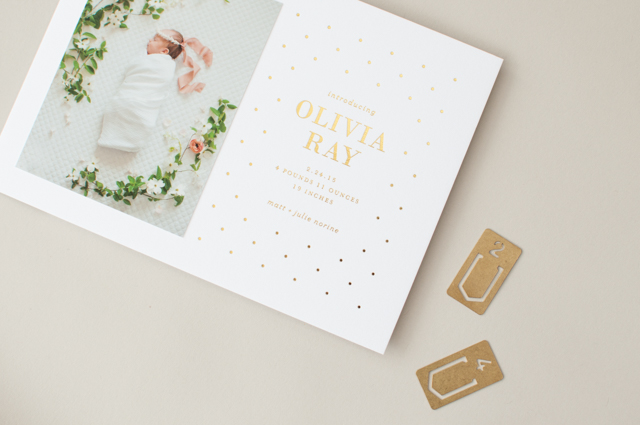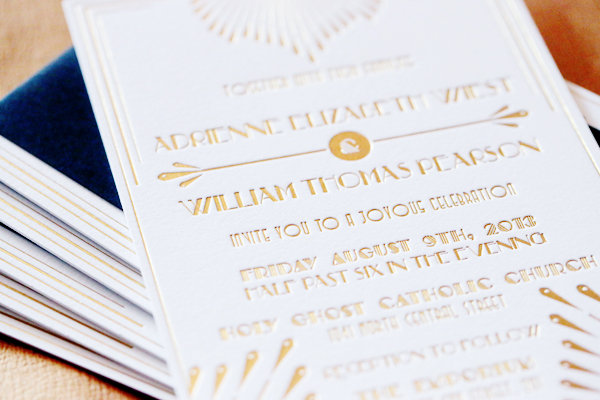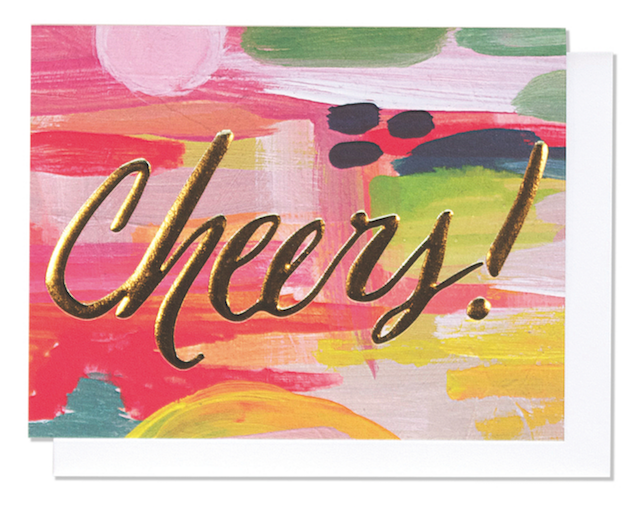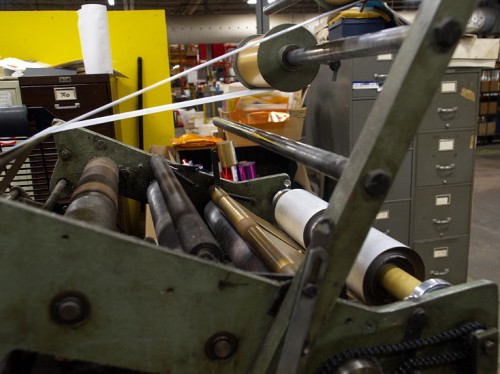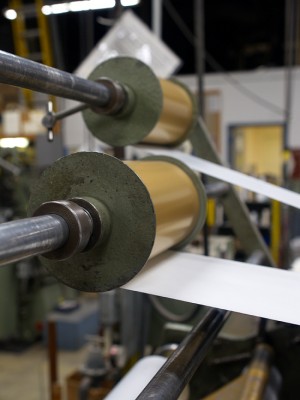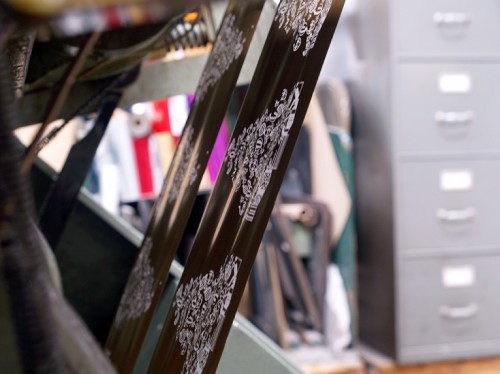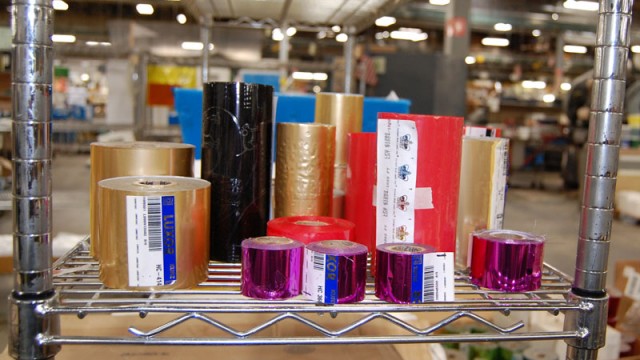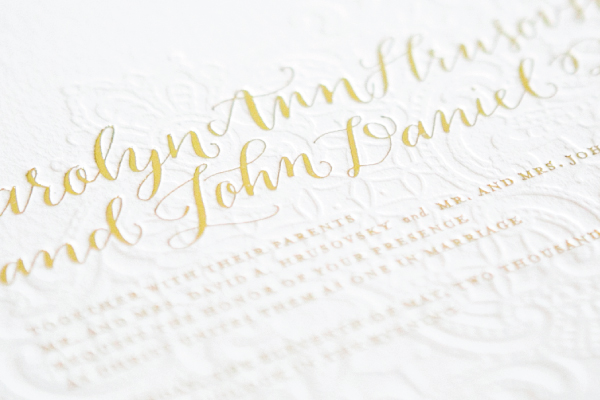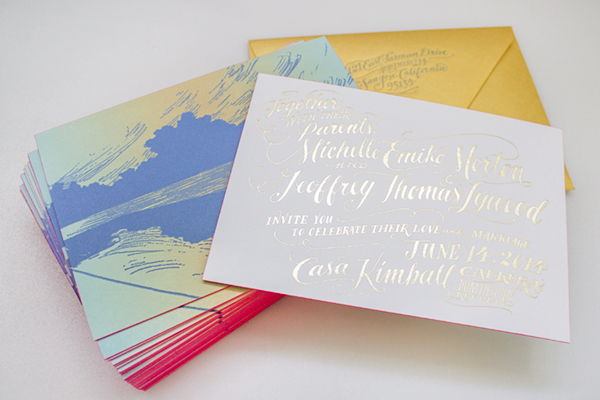While I’m away on vacation I’m running a series of guest posts on the various printing processes, from digital printing to engraving.  I’ve asked some designers and printers to share their expertise and lots of photos to fill you in on what you need to know about different stationery printing methods.  This afternoon, we have Jen from Starshaped Press to talk about antique letterpress printing!
Hi everyone! Â Jen here from Starshaped Press, and I’m here to talk about letterpress printing specifically using antique metal and wood type.
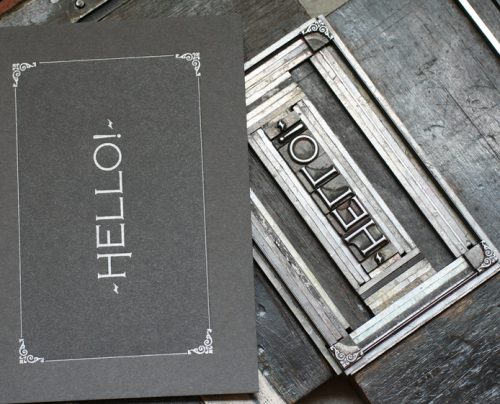
What is Antique Type Letterpress?
Letterpress printing was the standard method of printing for approximately 500 years prior to offset printing taking the reins in the twentieth century. Letterpress printing is the ‘relief’ printing of text and images using a press with movable type or plates, in which a reversed, raised surface is inked and then pressed into a sheet of paper.  Invented by Johannes Gutenberg, it replaced handwritten calligraphy and was the popular form of printed text from the mid-15th century until the 19th century.
Until very recently, much of this letterpress printing was accomplished using both metal and wood type, literally individual letters arranged to form words. Â The type could be reused over and over as long as it was cared for and well-maintained. Â While metal type was ideal for commercial printing involving small type (like newspapers), wood type was the best option for larger projects, i.e. posters, broadsides and playbills, due to its lightweight nature. Â Type often reflected the trends of the day, from Victorian to Art Nouveau to clean, contemporary stylings of post war design.
The Printing Process
The process of letterpress printing is virtually unchanged; type and cuts (ornamental or image plates) are arranged and locked in place into a ‘chase’ (a metal frame that is inserted into the press), and can be used on any press that will take materials that are ‘type high’ (this standard measurement is .918″).
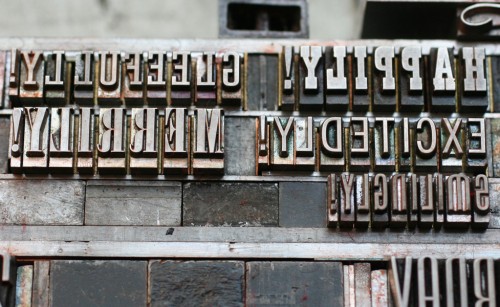
All type is relatively similar in that it is the same height and has markings that help the user determine what typeface it is and what foundry produced it.  Since letterpress is a relief printing process, the type is in reverse – hence the phrase “Mind your p’s and q’s.”
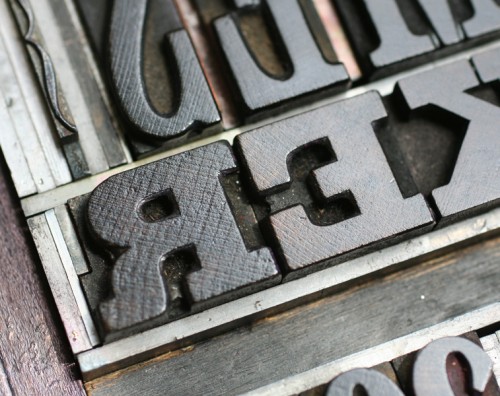
Thanks to the development of standards, type comes in common sizes ranging from 6 to 72 point in metal (give or take). Â Wood type is measured by ‘line’, or pica, and comes in a large variety of sizes.
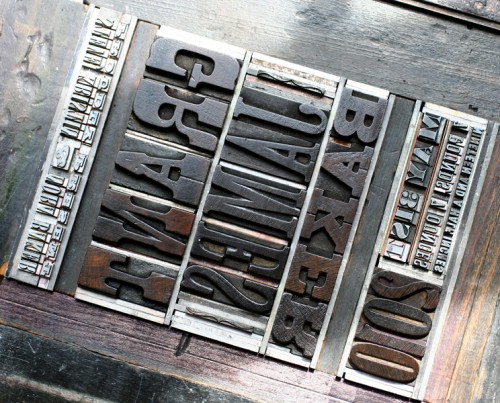
There are many interesting set up pieces (known as leads, slugs and quads) that help letterpress printers achieve really fantastic tricks, such as combining different point sizes of type together, setting type on curves and angles, and printing in multiple colors without altering the set up.
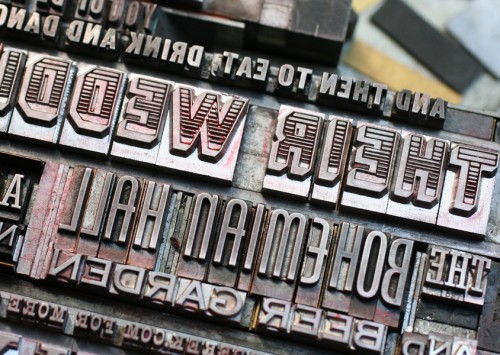
Many small and intricate border and ornamental pieces are veritable designer candy; some are so detailed and miniscule that they cannot be replicated in a magnesium or polymer plate. Â This is also true of many 19th century typefaces that are shaded, outlined or have lots of ornaments characters.
Letterpress printing with antique type has many distinct characteristics that may or may not be appealing to everyone.  It is not designed to produce a heavy impression in paper, as the type is soft and would be ruined.  In fact, the concept of a deep letterpress  impression is a very recent development.
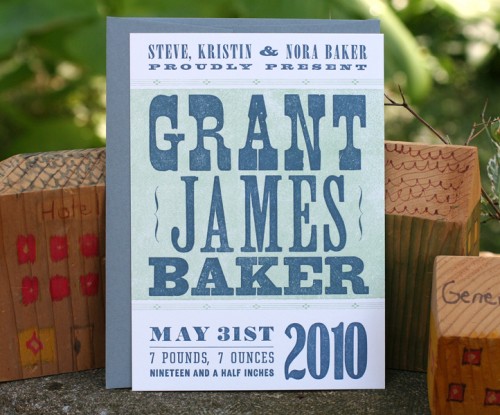
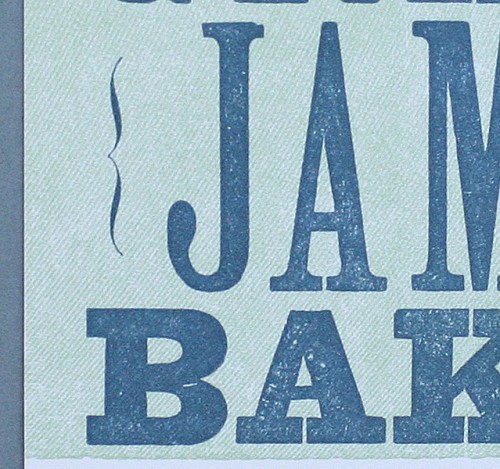
It also does not produce perfectly crisp and even results, given that the type comes from a variety of backgrounds (some may be 100 years old, and some may be brand new from one of the few extant type foundries). Â However, there are many wonderful qualities to hand set type, including an element of surprise that happens after the forme is locked up and the first print emerges from the press.
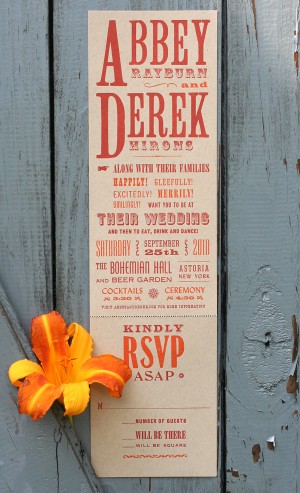
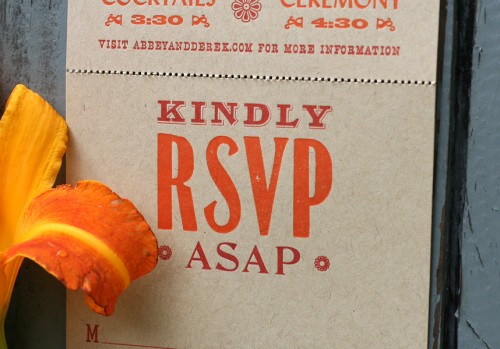
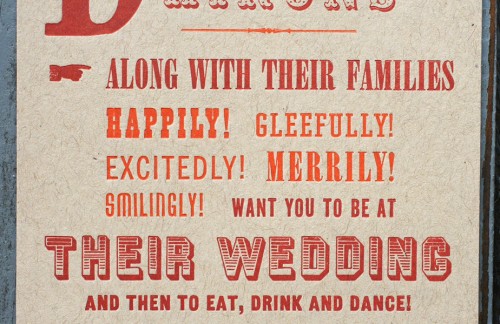
Some letters are charmingly awkward in a way that digital type is not, and many wood letters have an incredible texture to them. Â There are elements to working with metal and wood type that can be frustrating for the printer, as well as exhilarating, as one learns how previous craftsmen worked around the quirks of type.
Tips and Advice
When deciding on letterpress printing, if a deep impression is the one thing that you really want, working with an antiquated printer is not the direction to explore. Â But if you’re seeking a vintage-inspired design that incorporates original Victorian, Art Deco, or other forms of antique type, then an old timey press is perfect for you! Â Antique type is also perfect for couples seeking to model their wedding invitations after vintage show or concert posters, since the medium is particularly suited to text-focused designs. Â It is also the most eco-friendly option for letterpress printing, as the type can be used and reused for centuries if it is maintained, eliminating the need to create new materials for every job.
Besides Starshaped Press, where we do all of our printing with handset metal and wood type, here are a few shops we admire for their commitment to antiquated type setting:
Hatch Show Print
Yee Haw Industries
Hammerpress
Thanks Jen! Â You can check out more from Starshaped Press right here!
Photo Credits: Starshaped Press
Notes on our images:
Grant’s Baby Announcement was printed in two colors on a platen press. The smaller type is all metal, while the name was set in wood. The close up shows the fun texture the wood type created (there’s also a close up of the type itself).  The pale green texture in the background was achieved by printing the back side of a large piece of wood type, combined with ornamental linotype slugs (patterned lines that were cast on a linotype machine).
Abbey and Derek’s Wedding Invitation features a perforated reply card and folds to fit in a #10 envelope.  It is printed in two colors on kraft cover weight stock and combines both wood type and metal type. Because of the amount and variety of size of the type included, it was printed on a Vandercook proof press.  To justify the type, it has to be letterspaced extensively, as shown in the close ups.
*Starshaped Press is a sponÂsor of Oh So BeauÂtiÂful Paper; for more on my ediÂtoÂrÂial poliÂcies please click here.

